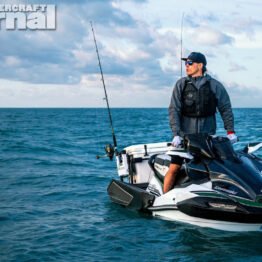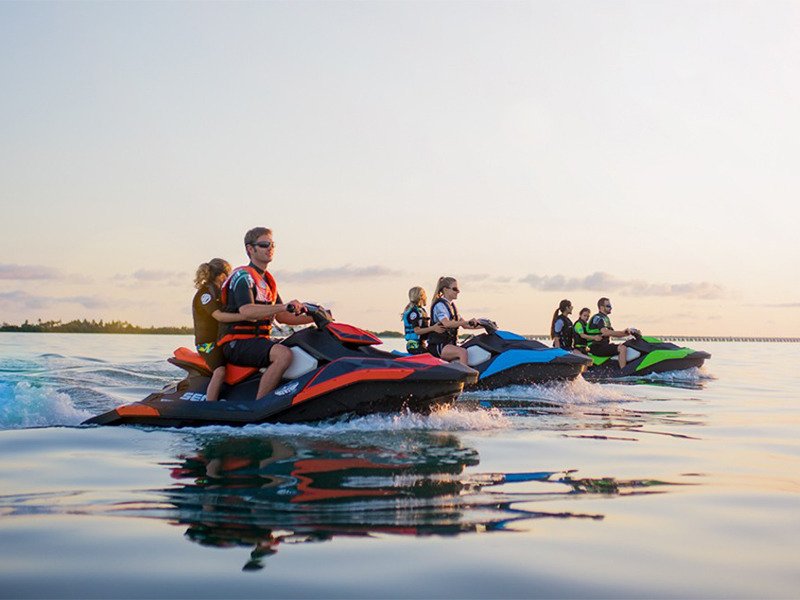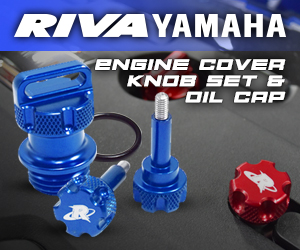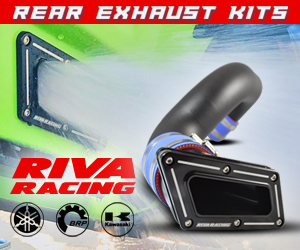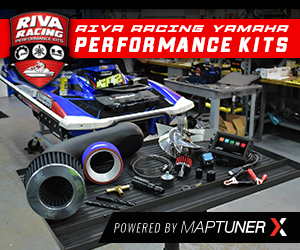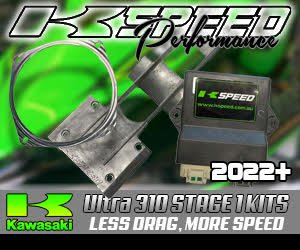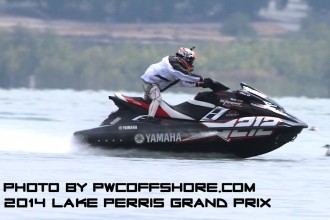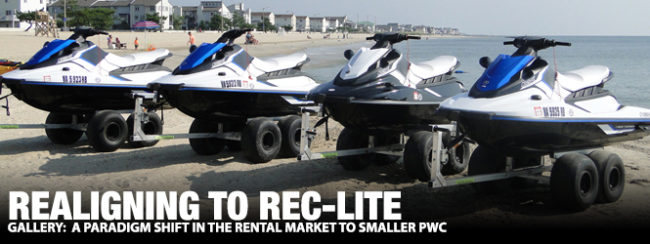
Classical economics assumes that profit equals total revenue, minus total costs. Therefore, we can assume that PWC rental companies try to maximize their profit by generating maximum sales at the same time as reducing the cost of operations. In other words, this would mean using the cheapest available watercraft. This however, may not exactly be the case anymore.
When Sea-Doo first came out with the Spark lineup back in 2014, it was a revolutionary change in the Personal Watercraft Market. Perhaps the biggest shock was the price tag. When it was first introduced, the MSRP was just shy of $5,000 USD. This was the introduction of a new breed of personal watercraft; a new category called the “Rec-Lite” or light recreation category. In 2016, Yamaha announced its “Rec-Lite” entry for the 2017 season with the release of its EX Series WaveRunners.
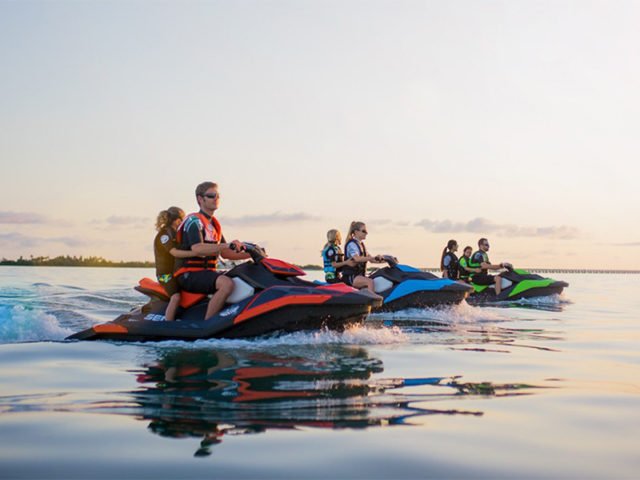
With all of the new cheaper “rec-lite” sales going on in the consumer market, we here at The Watercraft Journal wondered how this would affect the rental market. In particular, would the rental companies adopt this strategy and continue to use the new and cheapest available category of units? It would certainly make sense if you consider the basic strategies of economics. We recently visited with some rental companies who are now using “rec-lite” models and got some very surprising insight. Some insight which gives indication that classic strategies are sometimes not so rewarding.
In the decade prior to the Rec-Lite category, we saw rental companies utilizing “recreation” category watercraft unanimously for their fleet. Whether it was Yamaha’s award winning VX-series Waverunners, Sea-Doo’s innovative GTS/GTI series, or Kawasaki’s tried-and-true STX-15F. According to manufacturer’s websites, the cheapest recreation category watercraft starts right around $7,700 USD but are generally priced around $9,600 for the SMC or fiberglass hull units traditionally used by rental companies. The cheapest Rec-Lite watercraft comes in at about $5,300 USD.
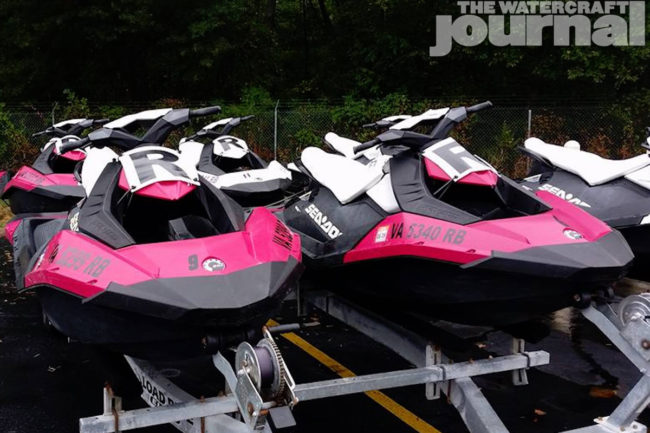
We caught up with a company called Lighthouse Inflatables LLC that used to rent Sea-Doo Sparks out of the Wolfsnare Creek section of Virginia Beach, VA. General Manager Zach Miller was helpful to answer many of our questions:
The Watercraft Journal: How long have you operated at your location and what different models of watercraft did you use for rentals?
Lighthouse Inflatables: We were at our 64th Street location for about 5 years doing paddle boards and other rentals and then got into jet ski rentals using Sea-Doo Sparks.
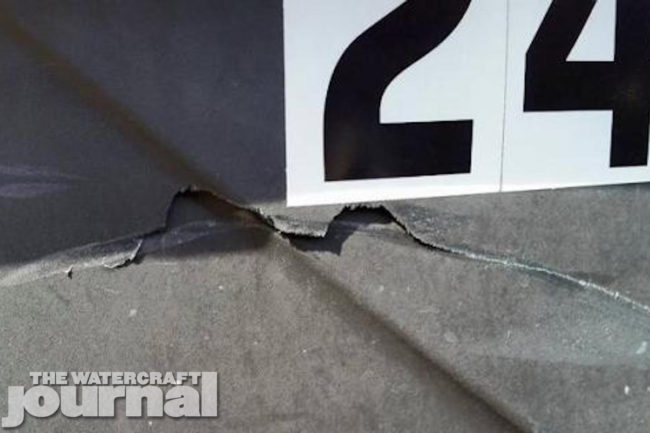
WCJ: What led you to choose the Sparks? How did you like the Sparks? Did you have good success using them for rentals?
LI: Cost was the influence that made us choose the Spark models. We actually had quite a few problems with the Sparks and it came to a point where we weren’t making much of a profit in our operation. The [Polytec] hulls were getting damaged and we had to keep replacing wear rings.
WCJ: What type of environment/water conditions were you operating in and do you know what the typical source of these damages was?
LI: The water depth does fluctuate depending on tides; customers would pull the watercraft up to the beach area – the hull damage was generally coming from constantly putting the watercraft on and off trailers or dry docks. The impact to the same area repeatedly would eventually put a hole in the hull. In rare cases, people would run into each other and obviously, there would be damage.
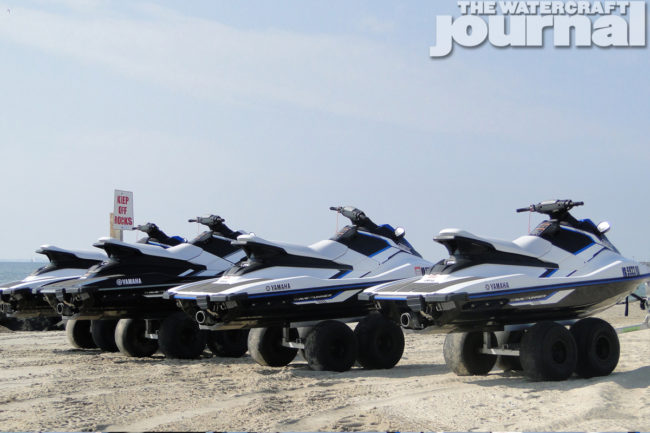
WCJ: How were your customers’ impression of the Sparks? Were there any complaints?
LI: Customer satisfaction was generally very good. No complaints that I am aware of. We had many repeat customers and I still have previous customers calling me these days to see if we have the Sparks for rent.
WCJ: We saw some Sea-Doo GTS’s when we came in, were those part of your rental fleet?
LI: Due to lots of downtime with the Spark models, we got some GTS models. Even though they were more expensive units, we had some better success; no mechanical issues or downtime. However, we are not operating rentals anymore. Another company bid for renting at this location now.
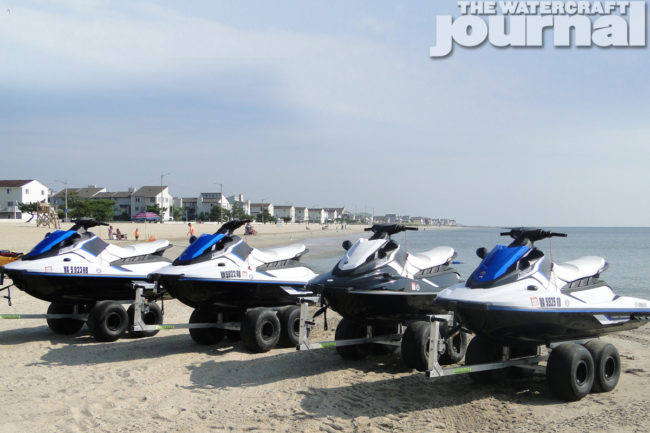
We then went and spent some time at Hampton Watersports LLC on Buckroe Beach in Hampton, VA. Owner Jeremy Churchill gave us some more insight. We found out that coincidentally, Jeremy was actually involved in the previous operations at Lighthouse Inflatables and had some further information about the Sea-Doo Sparks. Hampton Watersports currently rents Yamaha EX Sports and Sea-Doo GTI’s.
The Watercraft Journal: What led you to choose your current watercraft models for your rental fleet?
Hampton Watersports: Price was the driving factor. I knew I didn’t want to use Sparks again (we were using 3-up models without iBR) as we kept replacing wear rings and eventually went with stainless wear rings for more durability. I have friends in the industry who use Yamaha VX-series with good success, however, I wanted something lighter because we use Aquacarts to pull the skis on the beach. I also didn’t want a true 3-seater craft because when people fall off and can’t get back on, we have to rescue them and it gets hard with more than two people. I chose the Yamaha EX Sports. Sea-Doo also gave me some GTI models to try.
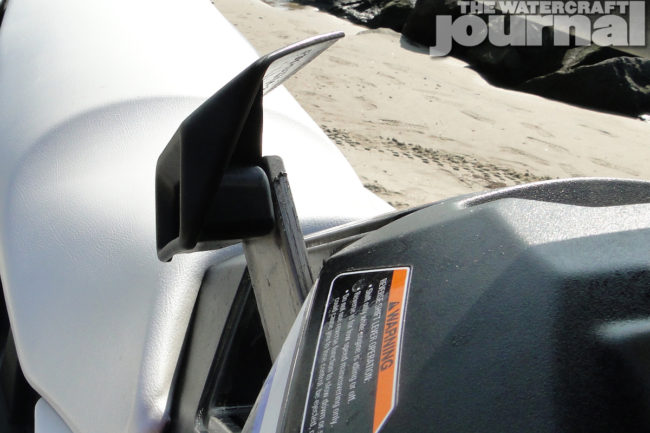
WCJ: Why did you choose the Sport model over the standard EX?
HW: We liked the idea of having the manual reverse lever and mirrors. In Virginia, rental companies are required to have a spotter watercraft going out with the renters so it is easier for our employees to maneuver and have rear views. It also has a rear boarding step.
[Jeremy did later admit to us that in hindsight, it may not be good to have the reverse lever as some of the young children who ride in front of their parents think the reverse lever is a handle to hold on to while riding.]
WCJ: Are there particular times when you prefer to use the larger Sea-Doo GTI models over the smaller Rec-Lite Yamaha EX’s?
HW: Yes. Operating in the Chesapeake Bay, sometimes it can get windy and create lots of chop. We have some guests where it just gets too rough for these lighter craft and we will put them on the GTIs instead. Also these Yamaha EX models are advertised to fit three people but there’s no way, they are just too light and unstable [with that much weight]. A lot of people flip over but we never have that problem on the GTI.
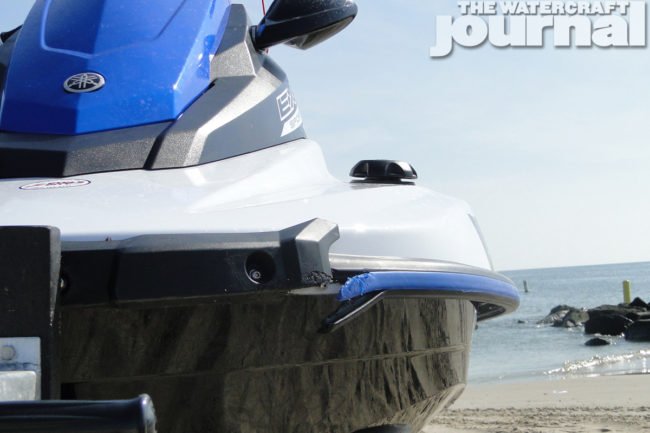
WCJ: Let’s talk fuel costs. Many of the recreation models have special keys or learner (rental) mode settings to keep speed and fuel consumption down. Since the Yamaha EX doesn’t have this mode, are you worried about new users going too fast?
HW: Honestly, most renters aren’t going above 20 MPH even though the units will do 50 MPH. It feels like you are going super-fast on the water when you are newer to riding. See that guy out there? Look at him. He thinks he’s flying; he’s only doing about 25 MPH. As for the Sea-Doo Spark, we had the 3-up models, and most people didn’t even know about the Sport mode to unlock the higher acceleration. Fuel burn is very low on both models. I didn’t see a difference in overall cost. The only thing is the Spark has a smaller tank and we were filling up twice a day where we can get through the day on the Yamaha.
WCJ: What about reliability of the Yamaha EX model?
HW: Overall, I’ve not had many problems. We are seeing wear on the hull from pulling the units on the Aquacart. The hull SMC is only painted and not gel coated like the larger recreation models and so you can see the paint rubbing off. I’m not too worried yet – not until I begin to see damage going in and exposing fiberglass. We’ve also had issues on the wear rings; they are getting scrapped up but the units are still running. They just have some cavitation and reduced acceleration. We are also occasionally seeing small rocks and debris getting into the water cooling ports and clogging the rear water spout sprayer.
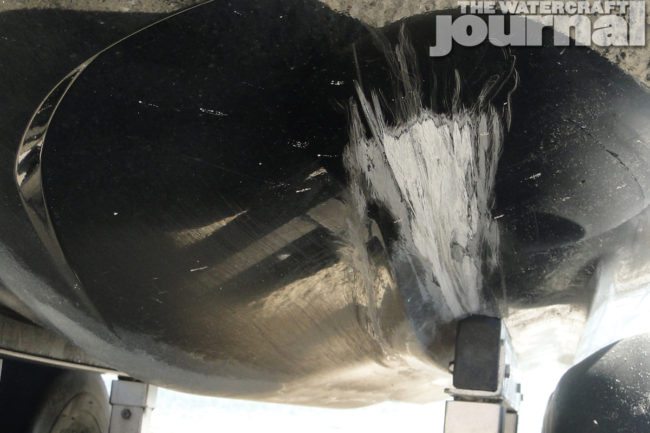
There are some definite benefits as well as drawbacks to using Rec-Lite watercraft as opposed to their larger, more stable recreation counterparts. We do have a lot of seat time on Sea-Doo’s Spark as on the newly-released Yamaha EX model and we are impressed with both. Any type of watercraft used in the rental business is naturally going to take a beating especially with some of the crowds who have the “ride it like you stole it” mentality. In some cases, units can even get operated outside of manufacturer recommended limits (considering water depth minimums), and certain procedures and requirements for pulling up to a beach or trailer.
It certainly makes sense from a price standpoint that rental companies would initially consider Rec-Lite models. Ultimately, customer satisfaction and demand will be the only determining factor. Does the quick, nimbleness of a Rec-Lite give them excitement? Or do they require a stable, enjoyable ride with the whole family on a larger unit? Let’s face it, some of these rental spots in ocean areas can get physically demanding. As we have certainly seen during our investigation, it might be a worthwhile investment to keep a few recreation models in the stable.







